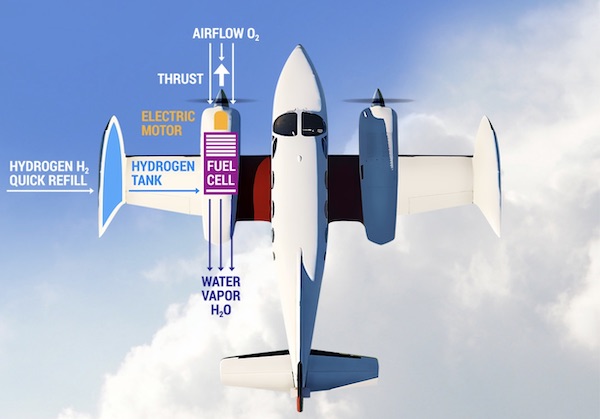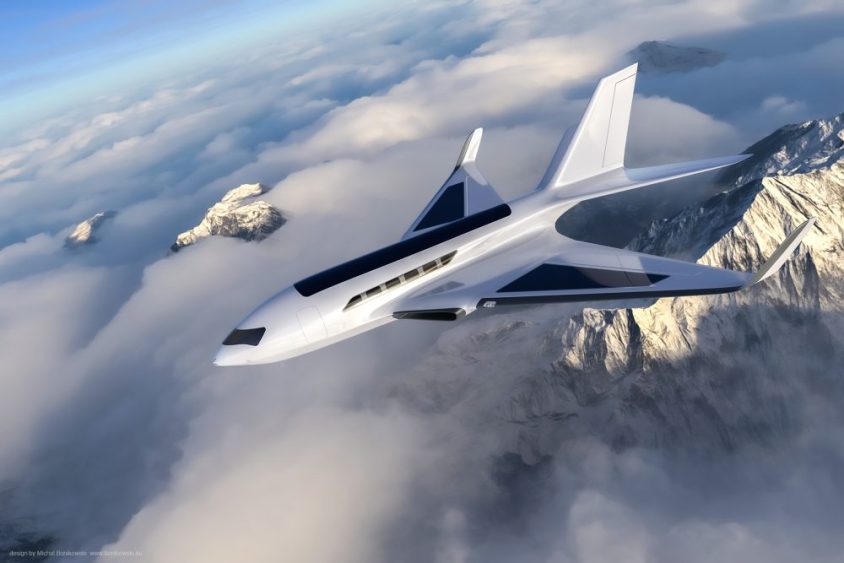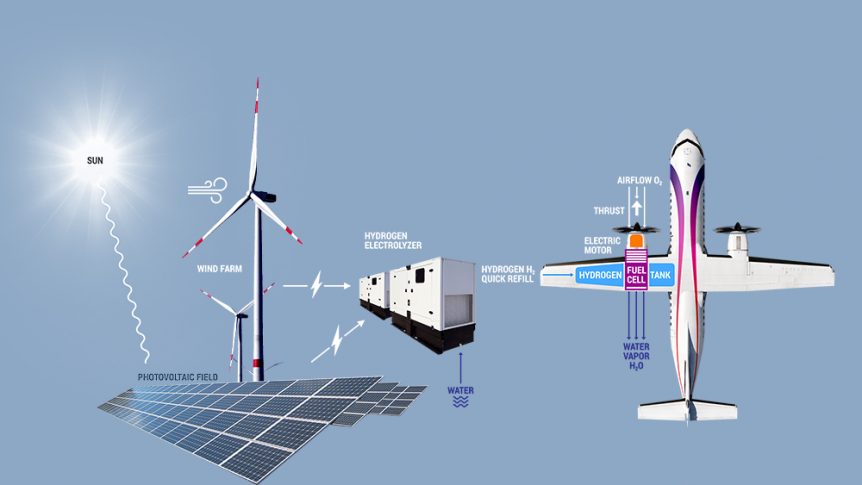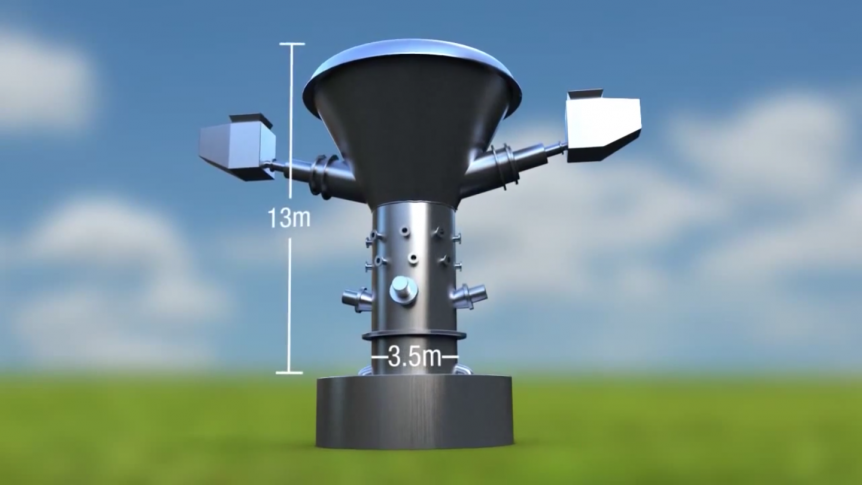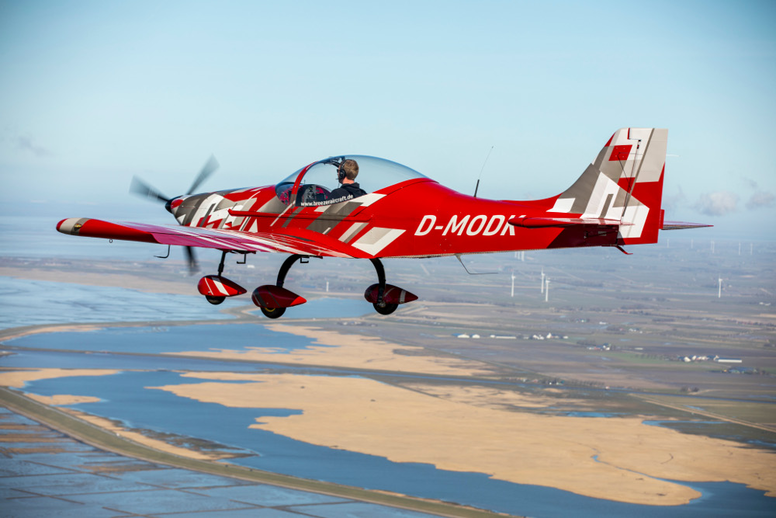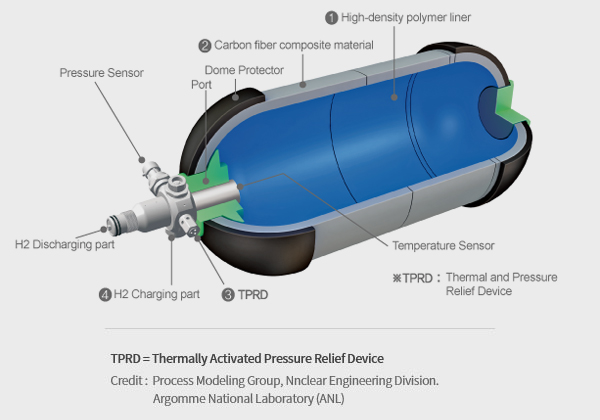An Historic Hydrogen Outing While Airbus and MagniX promote the near- and not-so-near virtues of hydrogen-powered flight, ZeroAvia has demonstrated such flight with the largest H2-powered aircraft so far. Their Cranfield, England-based Piper Malibu flew on H2 power for the first time September 24 on an eight-minute circuit. The blue Malibu reached 1,000 feet and a top speed of 100 knots true air speed. Quick to capitalize on the successful mission, , ZeroAvia founder and CEO Val Miftakhov held a press conference the next day. In it, he explained his team,“has had discussions with seven aircraft manufacturers about possible retrofit and new-build applications for the propulsion system. He said the company has signed letters of intent with 10 airlines that have expressed an interest in the program based on presentations made to around 30 different prospective operators.” Earlier flights in Hollister, California and Cranfield were battery powered “to evaluate different elements of the powertrain.” Unspecified modifications helped prepare the craft …
Flying the Atlantic Electrically – The Freedom Flight Prize
It almost stops your editor in his tracks when he reflects that 93 years ago, Charles Lindbergh crossed the Atlantic in his Spirit of St. Louis. Even more astounding, competitors may win the Freedom Flight Prize by the 100th anniversary of that flight by making a cross-Atlantic and return flight in a 100-passenger, all-electric airliner. Carbon Footprint Ltd. Lindbergh’s plane, custom built but derived from a Ryan M-1 mail plane, cost $10,580 ($158,357 in 2019 dollars) and earned the $25,000 Orteig Prize. Now, an organization in England, “Carbon Footprint Ltd. has launched a competition to encourage sustainable passenger flight. It has created the Freedom Flight Prize, a competition focused on crossing the Atlantic Ocean 100-percent powered by renewable energy — with seating for 100. The first to do so will win the prize, which is expected to be worth millions of British pounds by the time there’s a winner,” according to Cleantechnica.com. “The competition is open to manufacturers, research/academic groups and inventors to …
HyPoint and Hydrogen Flight
Their web site proclaims, “HyPoint, Inc. is developing the next generation hydrogen fuel cell system with zero CO2 emissions and game-changing energy performance for the air transportation and urban air mobility market.” Pointing out a “fundamental barrier at a chemistry level” for lithium-ion batteries, the fuel cell maker launches some seemingly outrageous claims. HyPoint states, “Our patented technology increases operational time and utilization rate while decreasing TCO (total cost of operation) of any flying platform.” They claim “5X operational time, 10X utilization rate, 20X faster charge,” and a TCO 90 percent of equivalent battery-powered systems. As we have reported here, demonstrated outputs for lithium-ion cells are around 350 Watt-hours per kilogram, and about 260 Whr/kg at the pack level. HyPoint says it can already demonstrate a system-level specific power of 1,000 Watts per kilogram and an energy density of 530 kW-hr/kg. The company points to its next generation of “turbo air-cooled” units to produce even more power and show better energy density. These improvements would make the …
Hydrogen Malibu’s on Two Continents
Tuesday, June 23, ZeroAvia flew a hydrogen-powered Piper Malibu from Cranfield Airport in England., eight time zones from ZeroAvia’s home base in Hollister, California. Flown by Andrew Dixon, that and a subsequent flight gained extra publicity for “a James Bond stunt pilot*” helming the first electric aircraft capable of carrying passengers from a United Kingdom airport. Dixon reported that the battery-powered Piper Malibu needed 10 per cent less distance for take-off and climbed faster than normal. The Airplane Was the Real Star Reflecting the high-flying status of the test pilot, the airplane, part of a government-funded “HyFlyer” project, flew two missions on two days of 15 and 25 minutes each. Its two automotive-based batteries easily carried the six-passenger aircraft on its tours of the Bedfordshire countryside. The second of two Piper Malibus to be converted by ZeroAvia, the craft will be converted to hydrogen power before an October or November “300-mile flight from Orkney to an airport on the Scottish …
Making Greener-Than-Green Hydrogen
What if we could make “clean” hydrogen from plain water, with none of the problems associated with coal, oil or gas extraction and the waste byproducts produced in extracting brown or blue H2? Several approaches such as artificial leaves have been developed, but a totally different new approach seems incredibly promising. A promising approach may lead to greener-than-green hydrogen. The Race to Invent the Artificial Leaf Varun Sivaram, in his book Taming the Sun discusses how Nate Lewis at Caltech and Daniel Nocera at Harvard “determined to find a way to wring fuel out of thin air.” Each has created an “artificial leaf” that emulates the photosynthesis performed naturally by real leaves. A real leaf is far more complex than one would imagine, and the chemical interactions inside even more so. For all that, photosynthesis is only one percent efficient. “A commercially viable artificial leaf would solve several of the trickiest challenges in clean energy. It would create a way …
Hydrogen from Dirty and Clean Sources
Hydrogen, the first element created from the Big Bang, is the lightest in the periodic table, has the atomic number 1, and is “the most abundant chemical substance in the universe.” (Wikipedia). Until starting this blog entry, though, your editor was unaware that this colorless gas came in brown, blue, and green variants – referring to the methods used to extract h2. Hydrogen can be extracted from some fairly dirty sources, but the dirtiest may lead to an amazingly clean outcome, if we’re to believe what’s happening in Lancaster, California. The Guardian reports, “Broadly, there are currently three ways to make hydrogen. Brown hydrogen is produced when the element is stripped out of fossil fuels such as coal, while blue hydrogen is produced from gas. Green hydrogen is produced from running an electric current through water using an electrolyser powered by renewable energy such as solar.” (A simplified list) Brown H2 from Brown and Black Coal Brown coal has more …
Pipistrel’s Plans Evolve in Exciting Ways
In its 30th year, Pipistrel is making many changes, from a crisp new logo to new emphases and technologies. Its 801, intended for Uber’s Urban Air Mobility program, will segue into a cargo version and return later after the firm gains experience with deliveries. Meanwhile, Pipistrel will concentrate on developing a 19-seat, 300-mile range regional airliner while growing its global outreach for personal aircraft. Pipistrel is evolving and flourishing in exciting new ways. From Hang Gliders to Global Reach Ivo Boscarol, founder, owner and president of Pipistrel companies, CEO of Pipistrel d.o.o. Shares a look at his firm’s three-decade history and plans for the near future. Pipistrel reports in its newsletter, “The information that Pipistrel is running a program developing a large cargo-delivery hybrid-electric UAV in-house is accurate. For this program, we will be communicating about progress on a separate occasion, when we are ready to unveil the exact specifications, purpose and capability.” It will at the same time hold …
APUS Introduces Two Zero Emission Craft
We’ve written several times about structural batteries in this blog, from Dr. Emile Greenhalgh’s early research at Imperial College to more recent efforts along the same line. Interestingly, the basic idea remains very much the same over a decade. Energy storage would take place in a monocoque-type structure that could use carbon fiber, fiberglass, and even graphene as a structural material, while acting as a battery. Now some of this thinking is being applied to hydrogen storage in wings. “TubeStruct™” APUS, an aircraft design, structure and certification operation in Strausberg, Germany, offering a full range of services including flight training. They recently announced two new craft, both featuring hydrogen fuel systems contained in a novel “… patented structurally integrated hydrogen storage system, known as TubeStruct™.” In the shadow drawings of the airplanes, the tubes appear as though they could double as redundant wing spars. The i-2, a four-seat Normal-Category (CS-23) aircraft; and “The APUS i-6 is a technology demonstration platform …
Hydrogen Instead of Batteries?
As battery makers worldwide strive to develop safe, high-energy-density cells, Breezer Aircraft, a German small-aircraft manufacturer, unveils plans to power one of its ultralights with a hydrogen fuel cell. Breezer’s B400-6, receiving 600kilogram certification by the DAeC (German Aero Club), is light enough to enable a small fuel-cell-motor combination to power it. Usually powered by the ubiquitous Rotax range of engine, an electric version will initially to be driven by batteries, and then powered by a hydrogen-fuel cell. eCap and Re-Fire eCap, a German company specializing in systems integration and installation for a diverse range of classic and modern vehicles, will work with Breezer on the first installations. eCap’s demonstrated ability to convert everything from an antique farm tractor and classic cars (including a DeLorean) to modern buses and delivery trucks shows their range. Employing state-of-the-art technology and techniques such as reverse engineering leads to 3D CAD models from which ECap develops prototypes. Perhaps most important, “eCap works completely independently of …
Hydrogen-powered Drone Makes Ocean Flight
A one-hour, 43-minute flight between a hospital on the Caribbean island of St. Croix and a testing facility on the neighboring island of St. Thomas probably set a record for hydrogen-powered multi-rotor, over-water drone flight. The flight delivered live bacteria samples from a hospital on the Caribbean island of St. Croix to a testing facility on the neighboring island of St. Thomas. The demonstration was carried out by Guinn Partners and associated organizations. Most such medical deliveries are usually over land and within urban areas. Fixed-wing drones flying with Zipline in Rwanda deliver clinical samples and blood 80 kilometers (49.6 miles) each way out and return. The Doosan Mobility Innovations (DMI) DS-30 drone is a large machine able to carry a 10.8 liter, 4.3 kilogram (9.46 pound) compressed hydrogen container – good enough for two hours endurance. There was 30 minutes’ supply left in the tank when the drone landed on St. Croix. The machine can carry up to a …

